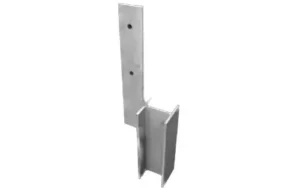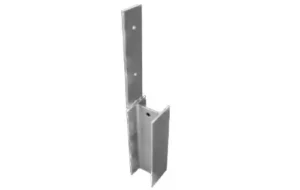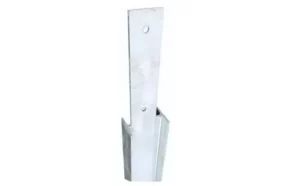Retaining walls are a trendy choice for homeowners aiming to enhance their outdoor areas. They not only hold soil in place but also add an extra layer of privacy to gardens and landscapes. However, before diving into this project, it’s crucial to approach it with care to ensure its effectiveness and prevent any harm to the surrounding area. Dive into our guide and by the end, you’ll be equipped with all the knowledge to construct a robust and aesthetically pleasing wall!
Preparing the Retaining Wall Foundation
The foundation is pivotal when installing a retaining wall. It supports the wall’s weight and ensures its longevity. There are two primary methods for foundation preparation:
- Level Slope Method: This involves creating a ground area that leans away from the wall, typically at a “one-to-10” slope. This method ensures rainwater drains away, preventing potential damage, especially for taller walls.
- Trench Method: This method involves digging trenches starting 6 inches from the wall’s base, extending up to 3 feet deep. Filling these trenches with gravel or quality soil enhances drainage.
Both methods have their merits, and often, a combination of both provides the best results.
Creating a Level Slope for Foundation
The slope is crucial for the wall’s foundation. For larger walls, a slight incline away from the wall is beneficial, reducing pressure and ensuring rainwater drainage. For smaller walls, a level surface often suffices. The choice between a level or inclined surface depends on the wall’s intended size and the landscape’s specifics.
Digging the Trench for Foundation Support
Once you’ve determined the slope, it’s time to dig the trench. Hand digging offers precision, especially in narrow spaces. However, for larger projects or challenging soils, machinery might be more efficient. The trench’s stability is vital for the wall’s overall structural integrity.
Choosing and Securing Materials for the Retaining Wall
Selecting the right materials is essential. Factors like cost, aesthetics, and the wall’s intended height play a role in this decision. Whether you choose cement blocks or stones, ensure they’re suitable for your landscape. Once selected, securing these materials is crucial. Using sand and gravel as bedding materials for blocks can resist potential damage. Incorporating geotextile fabric between the soil and sand layers can further prevent erosion. Always secure corner pieces with stakes for added stability.
With these steps, you’re well on your way to building a robust and aesthetically pleasing retaining wall. Always consult professionals when in doubt to ensure optimal results.
Building a Retaining Wall with Blocks or Bricks
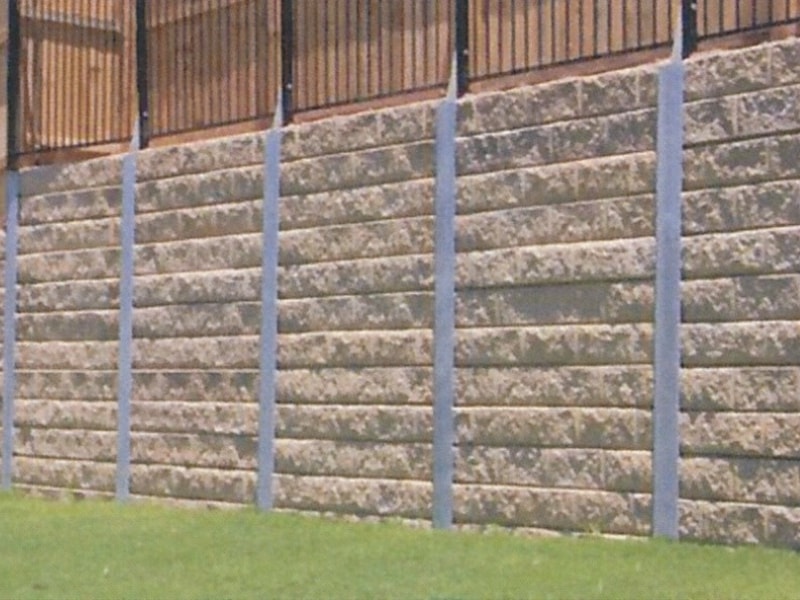
Retaining walls made of blocks or bricks are popular due to their polished appearance, enhancing your yard’s aesthetics. Here’s a breakdown to help you decide:
- Strength & Cost: Block walls typically have superior strength because of their consistent size and shape. They’re also quicker and more cost-effective to install, as they often don’t require mortar like brick walls.
- Design Flexibility: Bricks shine in the design department. They come in various colors, textures, and sizes, allowing for a more personalized touch. Blocks, while sturdy, don’t offer the same level of customization.
- Preparation: Before starting, research installation best practices. Ensure you have enough materials based on manufacturer guidelines and measure accurately for resource efficiency. Proper preparation ensures a smooth building process.
Building the Wall: Securing Blocks or Bricks
After laying the foundation, the next step is securing the blocks or bricks:
- Interlocking Methods: Different materials have unique interlocking techniques. Always adhere to the manufacturer’s guidelines during installation.
- Building Techniques: There’s a debate on whether to stack each course to the wall’s top and then level or to build and level each course separately. Building one course at a time speeds up the process but might lead to height discrepancies. Stacking all courses before leveling is more time-consuming but can be more accurate.
- Securing Blocks: Regardless of your chosen method, secure each block using adhesive or mortar every two feet, both vertically and horizontally. This ensures long-term stability.
Once your wall is up, consider landscaping around it for added beauty. Incorporate stones, shrubs, flowers, or even trees into your design to elevate the look of your retaining wall.
Landscaping around Retaining Walls
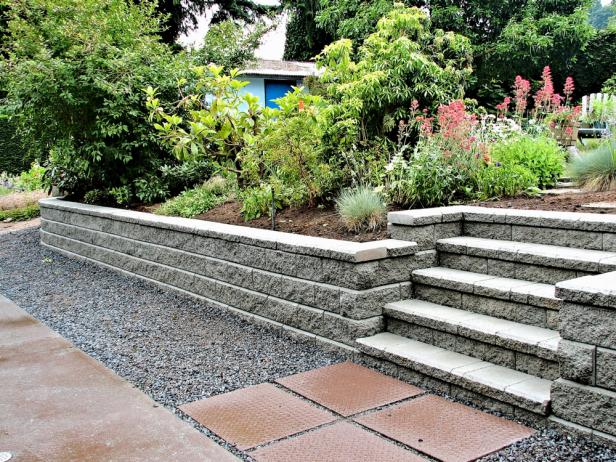
With your retaining wall in place, it’s time to consider landscaping. Integrating the wall into your landscape can be approached in various ways, but here are some key points to keep in mind:
- Vegetation Debate: There’s a longstanding discussion about the amount of vegetation suitable for masonry walls. Some experts believe masonry walls should have minimal vegetation, while others argue that certain plants can enhance the wall’s strength. It’s wise to consult a landscape expert to make an informed decision.
- Height Restrictions: Opt for vegetation that grows horizontally rather than vertically. Plants should ideally not exceed 2 feet in height behind the wall to maintain its integrity. If you’re keen on taller plants or trees, ensure they’re planted a good distance from the wall, and consider implementing a natural root barrier.
- Irrigation Considerations: When introducing plants, think about the irrigation system. It’s crucial to ensure that the system supports the vegetation without compromising the wall’s stability.
- Aesthetic and Functionality: Thoughtful landscaping not only enhances the visual appeal of your retaining wall but can also contribute to its stability. A well-executed landscape design can transform any yard or garden into a visually pleasing and functional space.
- Planning Ahead: Before diving into detailed aspects like watertight installation, plan out the type of vegetation you want. This ensures your landscaping complements the wall without jeopardizing its durability.
Incorporating these guidelines will help you achieve a harmonious balance between aesthetics and functionality in your landscaping project.
Tips for Watertight Retaining Wall Installation
A watertight installation is crucial for retaining walls to prevent future dampness or flooding issues. Here’s a concise guide to ensure your wall remains dry and durable:
- Quality Membrane: Opt for a top-tier membrane that acts as a water barrier. Apply it both above and below ground to prevent seepage. Always adhere to the manufacturer’s guidelines for optimal results.
- Effective Drainage: Ensure water doesn’t accumulate behind the wall. Introduce gravel or crushed rock behind the wall to facilitate runoff and groundwater drainage, preserving your wall’s structure.
- Choose the Right Backfill: Select appropriate backfill material based on your environment. Dense materials like clay retain moisture, risking dampness, while lightweight materials like sand might not support heavier walls adequately.
- Seal Joints and Edges: Don’t overlook vulnerable areas. Use sealants or caulking agents to fill any cracks or weak points, preventing water intrusion and potential damage.
In essence, meticulous attention during each installation phase ensures your retaining wall remains robust and watertight. Investing time and effort upfront can save significant future troubles related to water damage.
Responses to Frequently Asked Questions with Explanations
Are there any special considerations when installing a retaining wall?
When constructing a retaining wall, it’s essential to factor in the following:
- Environment: Assess the surroundings. The presence of slopes, trees, and vegetation will influence the wall’s design and construction.
- Drainage: Ensure the wall can channel water away effectively. Proper foundation and land grading are vital to prevent damage to the wall or nearby areas.
- Backfill Quality: Use soils that adhere to local standards for backfilling. Proper compaction is crucial to reduce wall movement over time due to settling.
In summary, a successful retaining wall installation hinges on understanding and addressing these core elements.
What kind of maintenance is required for a retaining wall?
Maintaining a retaining wall is essential for ensuring its integrity and longevity. Regular maintenance should include inspecting the wall for damage, cracks, and loose stones or panels. If any of these issues are present, they should be addressed to prevent further deterioration. Additionally, monitoring the drainage around the wall is important and if necessary, regularly cleaning out drains or installing additional drainage systems may be required. Finally, plant roots can cause significant damage to a retaining wall if left unchecked so it’s important to keep vegetation at a manageable level and ensure roots are not encroaching on the wall.
What materials should be used when building a retaining wall?
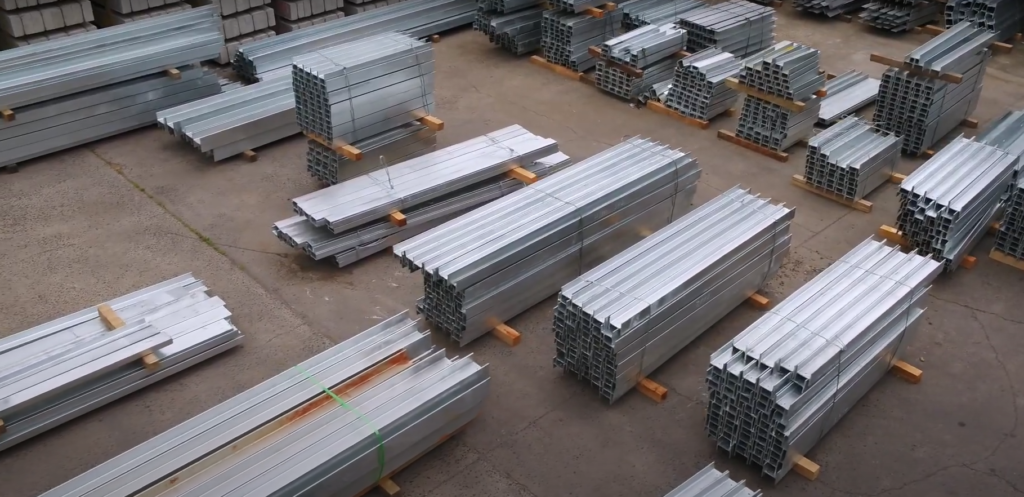
When building a retaining wall, it is important to use the right materials for the job. The most commonly used materials for this type of structure include concrete blocks, bricks, stone and stones of various sizes with gravel backfill. All of these materials have different strengths and weaknesses, so it is important to consider your particular project when selecting the materials.
Concrete sleepers are perfect for building large, stable retaining walls and can be easily stacked upon each other. Our selection includes Standard 40MPA Concrete Sleepers, which provide reliable strength and stability for standard retaining wall installations. When faced with more demanding projects, our Heavy Duty 50MPA Concrete Sleepers offer enhanced durability and superior load-bearing capabilities, ensuring optimal support for larger retaining walls or areas with increased soil pressure.
Additionally, we provide a Premium Range of Concrete Sleepers, designed to enhance the aesthetics of your landscape while maintaining exceptional strength and functionality. To address the specific requirements of fencing projects, we offer Concrete Under Fence Plinths, providing a sturdy and seamless solution for integrating fences with retaining walls. With our diverse range of concrete sleepers, we aim to provide you with high-quality options that meet your specific project requirements while ensuring durability and aesthetic appeal. However, they require a great deal of labour to install and may not be the most cost-effective solution as additional support may be needed due to their weight.
Bricks are more affordable than concrete blocks, however, they require more time to install since each brick needs to be placed into place one by one. Additionally, careful attention must be paid when stacking them as mortar is often needed in between each brick for structural integrity.
Stone and stones of various sizes are usually used on hillsides or areas where stability is essential. They are easy to stack and create strong walls but can be costly to buy due to their size and quantity required for larger projects. Weighing the cost versus the safety factor should also come into consideration when selecting this material option.
Finally, using gravel backfill in between the individual stones or bricks provides an additional layer of stability and further reinforces the structure of the retaining wall. This also helps prevent water infiltration over time that can lead to erosion and instability issues with a retaining wall built without this product.

